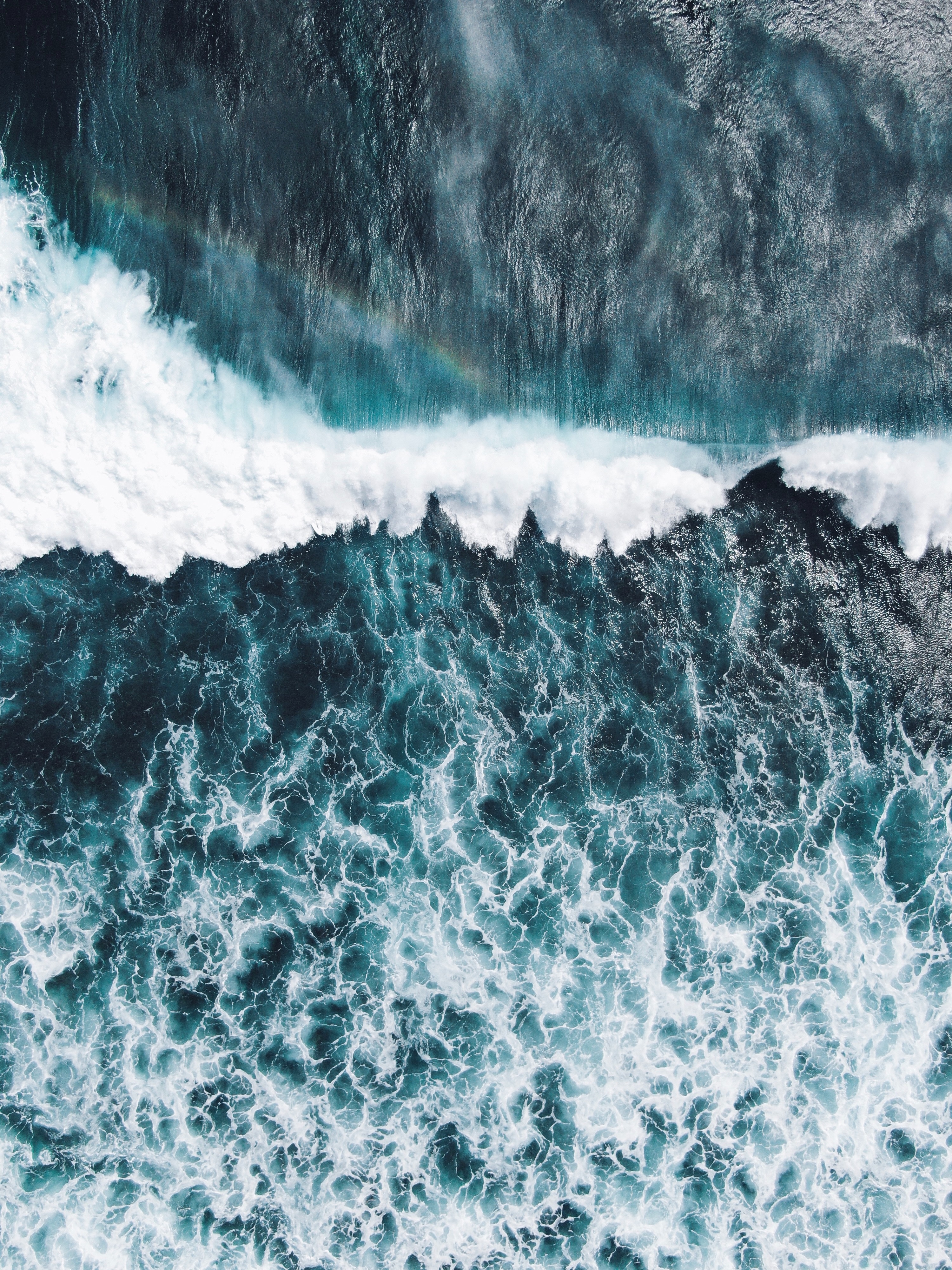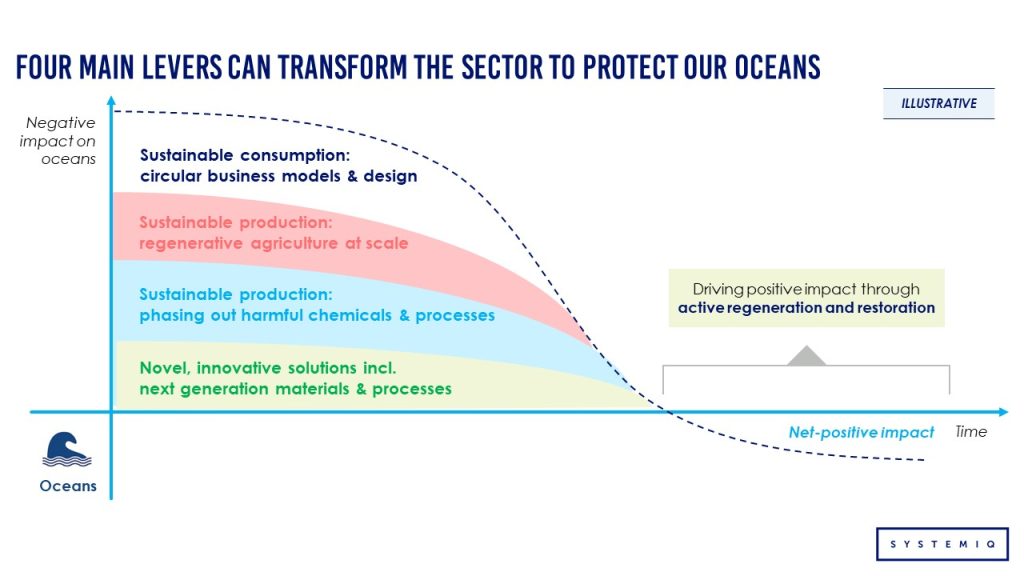Protecting our oceans: mapping priority areas of action
A study identifying opportunities for collective action.


Making fashion ocean positive
The world’s oceans and waterways are crucial to our lives in every way imaginable, yet hugely impacted by many elements of the fashion industry ecosystem. Be it in the various different garment production processes or in the packaging that is so widely used, the effects are significant and need to be addressed urgently.
Mitigating the fashion industry’s negative environmental impact on oceans and waterways is one of our three areas of impact at The Fashion Pact. At present, we primarily focus on solutions that address pollution from clothing companies’ upstream textile production and plastic packaging. You can find out more here.
Our overarching approach is to harness the power of the collective by bringing industry CEOs together to act as one. The group actions are chosen following a science-based methodology, which entails carrying out a mapping of the issues at stake before identifying where we could best add value collectively. This journal entry gives an overview into the study we commissioned for our ocean pillar and its findings. More details can be found in the full report here.
What was the study?
At the end of 2021, we partnered with Systemiq, who conducted an Ocean Mapping study that successfully identified gaps and opportunities for upcoming joint actions within the oceans & waterways space.
We have also carried out a similar exercise for our work to mitigate climate change, which you can explore here.
Learnings for the industry
Of the various recommendations made in the report, some are particularly pertinent to the industry as a whole. We share them here in the interest of open sourcing our learnings in order to create a wider impact.
- The holistic and interlinked nature of our work can have wide-reaching positive effects. For example, the work we do to mitigate climate change, through which we aim to limit global warming to 1.5 degrees Celsius, also leads to positive ocean-related results as it will halt ocean acidification. This is something that can be applied by the industry at large – thinking holistically can achieve greater impact.
- There are four main levers that can transform the sector to meet our ocean agenda. These levers should be considered by every brand looking to make environmentally beneficial changes:
- Sustainable consumption: circular business models & design
- Sustainable production: regenerative agriculture at scale
- Sustainable production: phasing out harmful chemicals & processes
- Novel, innovative solutions including next generation materials & processes, such as addressing microfibre leakage

- Collaborative efforts are highly effective in creating truly transformative change. Building on CEO leadership and on the power of the collective, The Fashion Pact is well positioned to drive change on key system enablers in the fashion industry. Potential collective actions requiring CEO leadership highlighted by Systemiq included:
- Aligning incentives to drive transformation in business & operating models
- Making commitments on financing or business strategy and setting related targets
- Engaging with policy makers and financial institutions at the most senior level
- Setting up cross-sector & public-private partnerships
The industry as a whole would therefore clearly benefit from a great level of collaboration when it comes to sustainability efforts.
- Accelerated adoption of the Zero Discharge of Hazardous Chemicals (ZDHC) Roadmap to Zero guidelines by the fashion industry is essential towards creating a positive impact on the ocean. The ZDHC MRSL (Manufacturing Restricted Substances List) is designed to eliminate hazardous chemicals at the point of their use in manufacturing which will eliminate their emission to waterways, waste, and air. The ZDHC MRSL identifies banned chemicals in textile, leather, rubber, foams, and adhesives, and trims production. Unlike an RSL (Restricted Substances List), it covers the entire manufacturing process. Brands adhering to ZDHC MRSL, ZDHC Wastewater Guidelines, and other ZDHC guidelines can significantly reduce their ocean impact.
- Progress on microfibre leakage needs to be accelerated. Microfibres produced from garments are known to have extremely detrimental effects to ocean health. Brands signing up to the Microfibre Consortium will help catalyse the speed of industry-aligned microfibre mitigation activities. For more information on The Fashion Pact’s endorsement of the Microfibre Consortium, see here.
For further detail on the findings and recommendations, you can find the full report here.